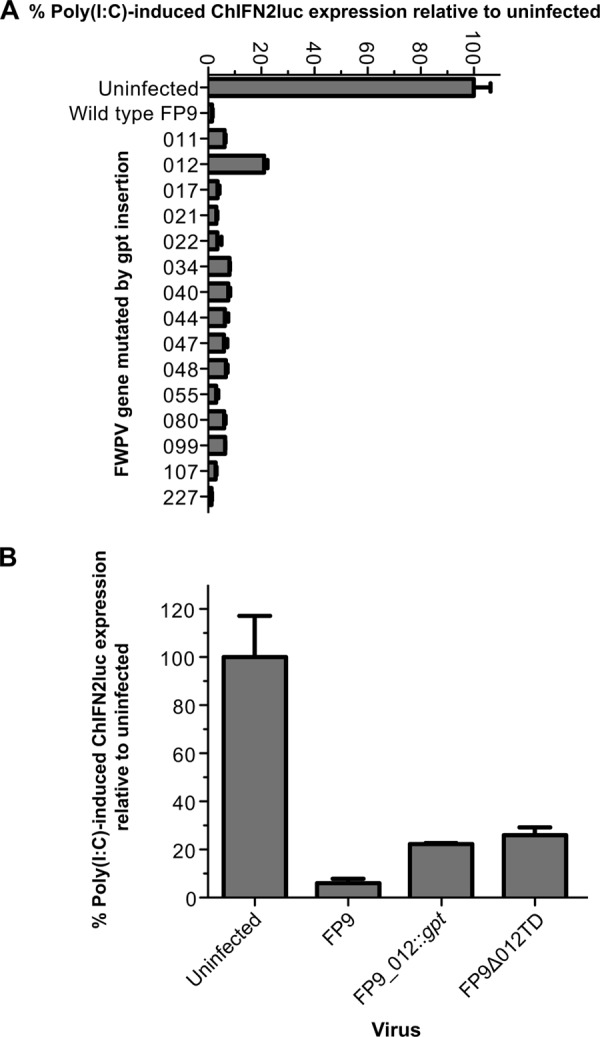Fig 2.

Screening of FWPV FP9 mutants for reduced ability to block poly(I·C)-mediated induction of the ChIFN2 promoter. (A) Chicken DF1 cells were transfected with the ChIFN2 promoter reporter (pChIFN2lucter) and the constitutive lacZ reporter plasmid pJATlacZ. Following recovery for 24 h, cells were either left uninfected or infected with parental FWPV FP9 or single-gene mutants of FP9 at an MOI of 10. Following infection for 4 h, cells were either left untreated or transfected with poly(I·C) (10 μg ml−1) and incubated for 16 h. Luciferase assays were carried out, and data were normalized using β-galactosidase measurements. The level of induction for each sample was compared to that for the uninfected, poly(I·C)-treated control to calculate percent induction. Results show the mean (n = 3) + SD. (A) Results of an experiment screening 15 single-gene insertion mutants; (B) blocking of induction of the ChIFN2 promoter by two independently isolated fpv012 mutants created by two different methods (insertion of the gpt selection cassette in FP9_012::gpt or trans-dominant selection-mediated deletion in FP9Δ012TD) is compared with that observed for parental strain FP9.
